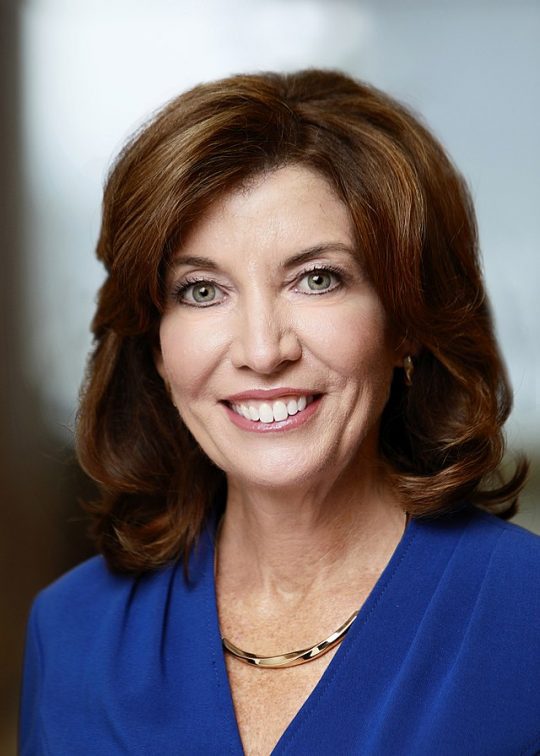
Gov. Kathy Hochul signed a new law Friday that will change most local elections to even years to improve voter turnout.
Hochul also announced her support for a future state constitutional amendment to align all election dates.
“Every eligible New Yorker deserves the right to participate in the democratic process without unnecessary barriers,” Hochul said in a statement. “By signing this legislation, we are taking a significant step towards expanding access to the ballot box and promoting a more inclusive democracy.”
The legislation, sponsored by Democratic state Sen. James Skoufis (D-Newburgh) and state Assemblymember Amy Paulin (D-Westchester), goes into effect in 2025 and affects elected offices outside of New York City and all elections for which the dates can be changed through legislative action.
Officials elected after Jan. 1, 2025, would have their terms shortened to match up with the even-year election cycle.
“Studies have consistently shown that voter turnout is the highest on the November Election Day in even-numbered years when elections for state and/or federal offices are held,” according to the legislation.
Consolidating more elections together will increase voter turnout and save taxpayer money, the governor’s office said. The change does not affect village elections and other offices that are protected in the state Constitution to be held in odd-numbered years.
It is unclear at this time what races will be affected by the new legislation.
In 2021, North Hempstead town supervisor, clerk and seats for Districts 1, 3, and 5 were on the ballot. Nassau County races that year were for county executive, district attorney, comptroller, clerk and 19 seats in the county Legislature.
In 2023, North Hempstead’s races included supervisor, receiver of taxes and seats for Districts, 2, 4, and 6 while Nassau County races included the 19 Legislature seats.
Critics of the legislation say that the issue is less of a matter of turnout and more of an issue of political power.
Nassau County Executive Bruce Blakeman, a Republican who was elected in 2021, said on X, the social media platform previously known as Twitter, the legislation is an “assault on the suburbs.”
“The tyranny of New York City politicians on the rest of the state and especially Long Island continues…We will meet this challenge squarely and forcefully,” Blakeman said Friday.
Blakeman won in a race for county executive against Laura Curran, who received 140,476 votes vs. Blakeman’s 146,626 of the 286,000 votes cast – less than 14% of Nassau’s 1.1 million people eligible to vote. The 286,000 votes for both candidates represented 26% of registered voters.
State Assembly Minority Leader Will Barclay (R-Pulaski) said the legislation pushes local races down the ballot and only benefits Democrats, who perform better in even-year cycles.
“Hochul and her political allies wholly disregarded countless local officials and organizations who strongly opposed this out of concern that local elections simply can’t compete wit the time and attention devoted to state and national campaigns,” Barclay said Friday on X.
Stephen Acquario, the executive director of the New York State Association of Counties, said in a statement that the legislation buries “local issues that impact New Yorkers’ daily lives at the back of exceedingly long ballots.”
Earlier this year, Democrats performed well nationally except for Long Island, where registered Democrats in Nassau County outnumber registered Republicans by 86,000 among 981,362 registered voters, according to the Nassau County Board of Elections.
In Suffolk County, registered Democrats outnumber Republicans by 32,000 out of 1,046,068, according to the Suffolk County Board of Elections.
On election night in November, when Republicans flipped the Nort Hempstead Town Board red for the first time in decades, Nassau County and State Democratic Committee Chair Jay Jacobs attributed part of the “exceedingly low” turnout this year to it being an odd-year election.
Jacobs said similar issues were prevalent across the state and were not unique to Long Island.
“The lesson is this: It is incumbent upon us to see to it that we get a system where we can run elections like these that are important elections that have important races in even years when the voters are of a mindset to come out and vote,” Jacobs said at the Garden City Hotel at the time. “We need voters who are going to pay attention to the issues. We need voters who are going to feel engaged in an election.”






